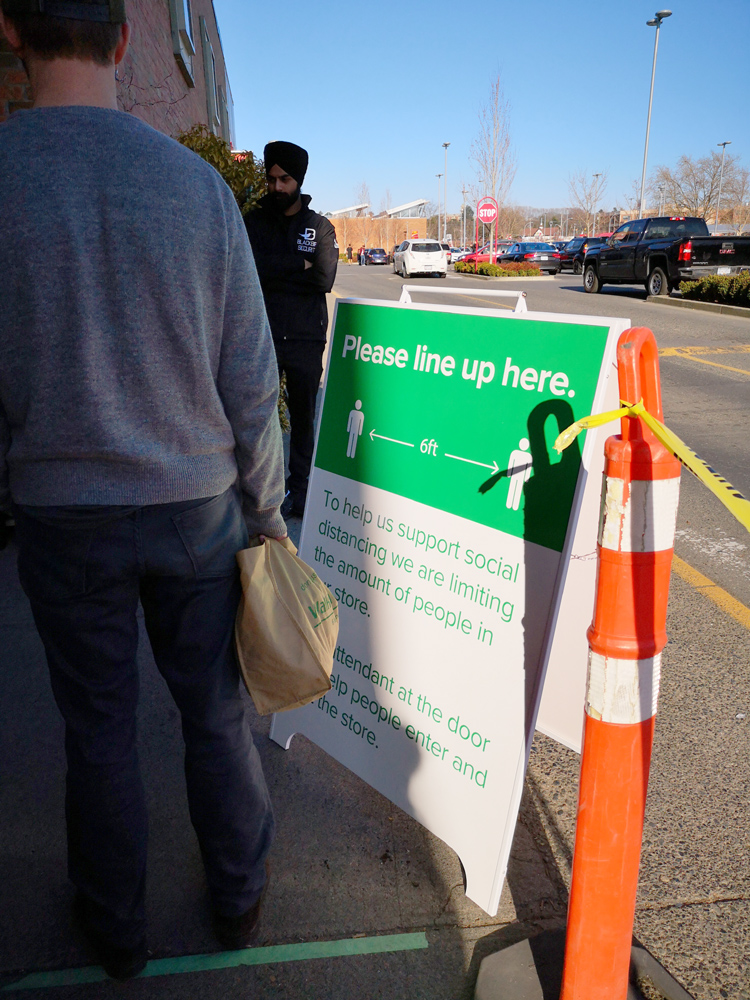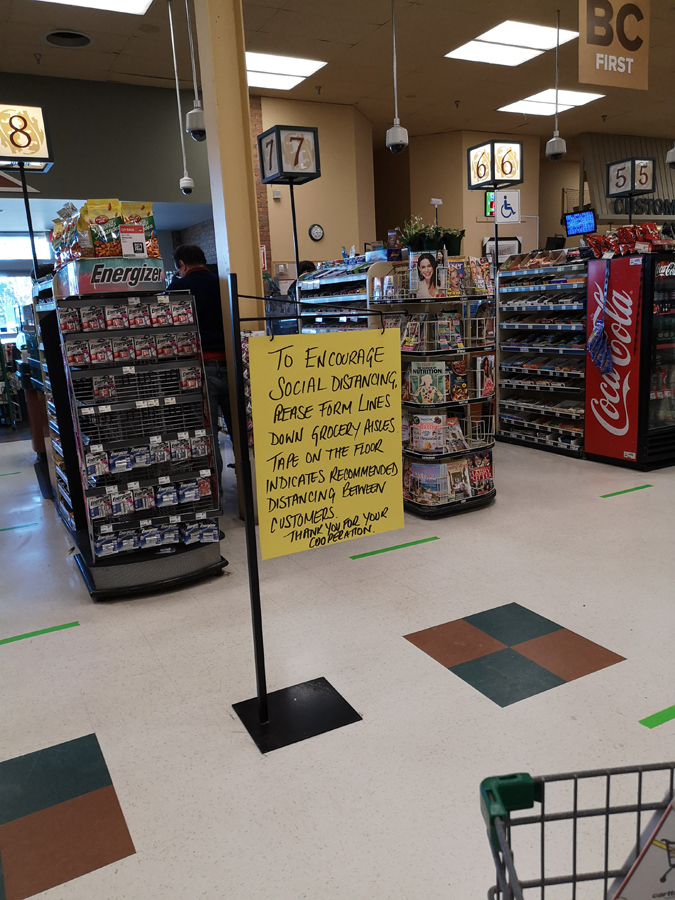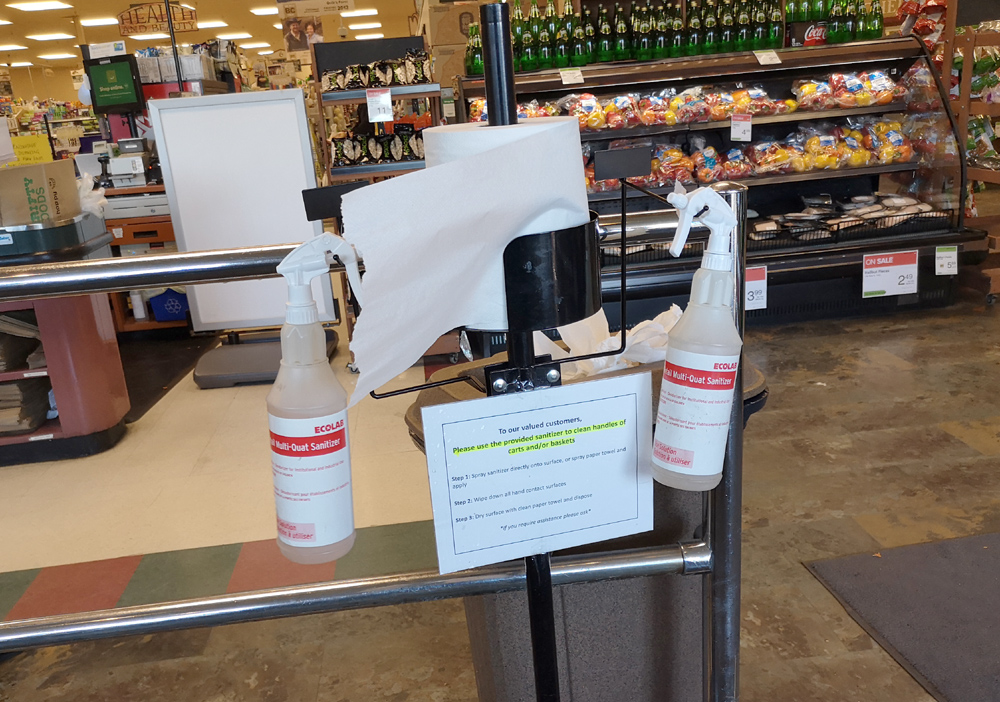
Sunday March 29, 2020 ~ BC
by Mary Brooke, B.Sc. ~ West Shore Voice News
As the challenges caused by the COVID-19 outbreak continue to shift, the BC government and Provincial Health Officer Dr Bonnie Henry continue to take unprecedented measures to slow the transmission of COVID-19, including in the retail food and grocery store sector.

Recently, Dr Henry issued an order under the Public Health Act prohibiting the gathering of people in excess of 50 people at a place of which a person is the owner, occupier or operator, or for which they are otherwise responsible.
Employers in the retail food and grocery store sector are asking for clarity about what this means for them.
Retail food and grocery stores play an essential service in every community by ensuring safe and reliable access to food, supplies and other provisions.
Today March 29, there is still some confusion, as different grocery stores take a variety of measures to interpret physical distancing.

“Many retail food and grocery store owners have asked whether or not the Provincial Health Officer’s order prohibiting mass gatherings of 50 or more people applies to them,” it was stated in a release today from the BC Government’s COVID-19 Joint Information Centre.
“While this order does not directly apply to the retail food and grocery industry, the spirit of the order should be followed,” it was stated. This example is given: “In large grocery stores where it is feasible to have more than 50 people present at one time, it is permissible to do so provided that appropriate physical distancing can be maintained.”

Some examples seen in the last week are having the number of people entering and leaving the store managed by a security guard at the store entry. Many stores are also using coloured tape to show the distance of six feet while lining up at the checkout.
As well, some larger stores are opening only every-other checkout lane as a way to further assist with the required physical distancing of 2 meters (6 feet) between people in the store.
The distance between customer and check-out clerk is probably much less than that … only the distance of the grocery ramp which is less than one meter.

Specific guidance for the Retail Food and Grocery Store Sector is available online. Key considerations include:
- enhancing the premise’s sanitation plan and schedule, and ensuring staff are practising proper hygiene. This includes frequent hand washing, only coughing or sneezing into an elbow, and avoiding touching one’s face;
- placing hand sanitizer with a minimum of 60% ethyl alcohol in dispensers near doors, pay stations and other high-touch locations for customer and staff use;
- ensuring washrooms are always well stocked with liquid soap and paper towels, and that warm running water is available;
- providing clean carry-out bags for purchased food and grocery products; customers should not use their own containers, reusable bags or boxes;
- posting signs at each check-out indicating that no customer packaging is to be used or placed on check-out counters;
- ensuring cones or tape markers are in place every two metres to provide customers with visible queues that support physical distancing;
- using physical queue-line controls, such as crowd control cordons at entrances and in check-out lines outside the stores;
- do not sell bulk items, except via gravity feed bins or where staff dispense the bulk items; and
- anyone with COVID-19-like symptoms, such as sore throat, fever, sneezing or coughing, must self-isolate at home for 14 days.
Employers should reassess their work environment every day and keep updated with the information posted on the Province’s website: www.gov.bc.ca/COVID19
The BC government says it is doing everything it can to help contain the spread of COVID-19, adding that the safety of British Columbians remains its top priority.
===== More:
For a copy of the guidelines providing guidance to the retail food and grocery store sector, visit: https://www2.gov.bc.ca/assets/gov/public-safety-and-emergency-services/emergency-preparedness-response-recovery/embc/covid-materials/covid-19_guidance_to_grocery_stores_29mar2020_final.pdf)
Okay to shop for groceries during COVID-19 (West Shore Voice News, March 26, 2020)


